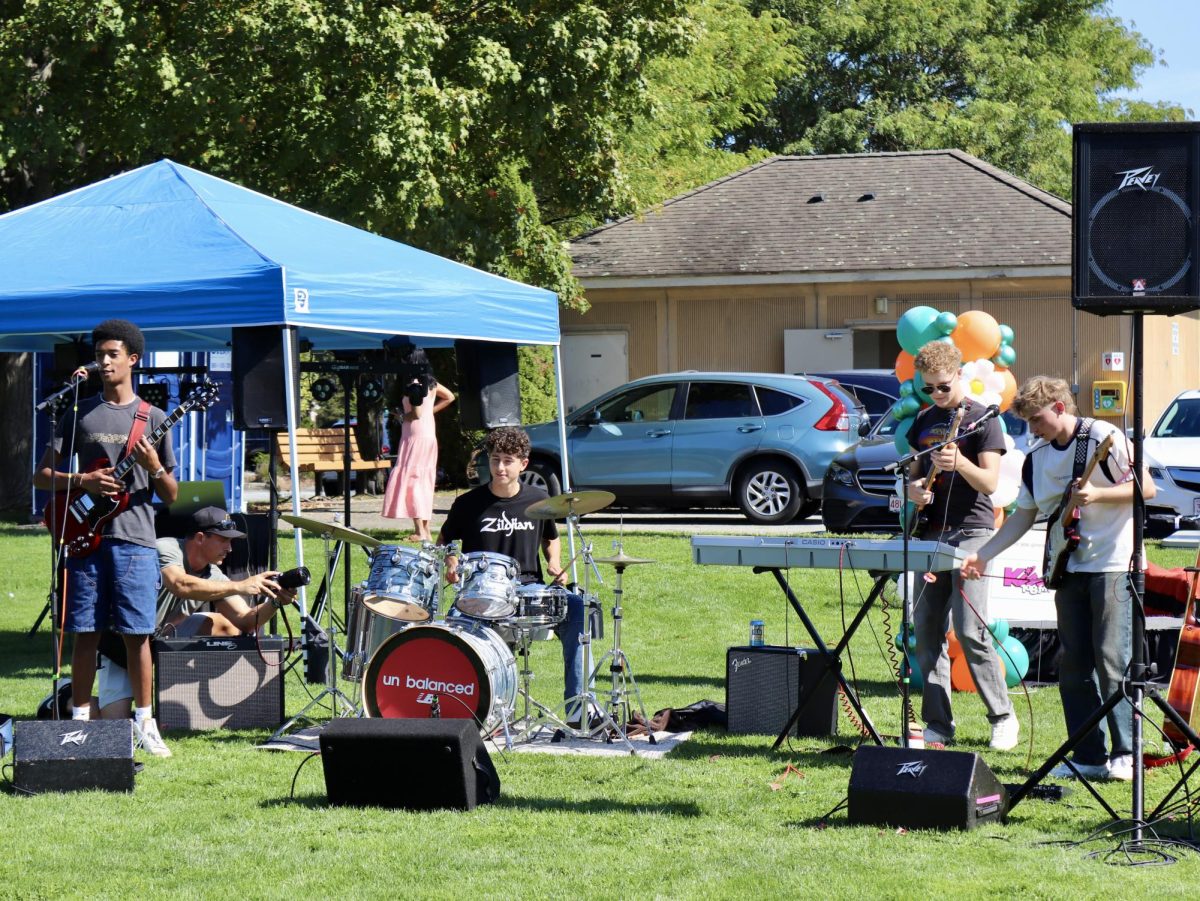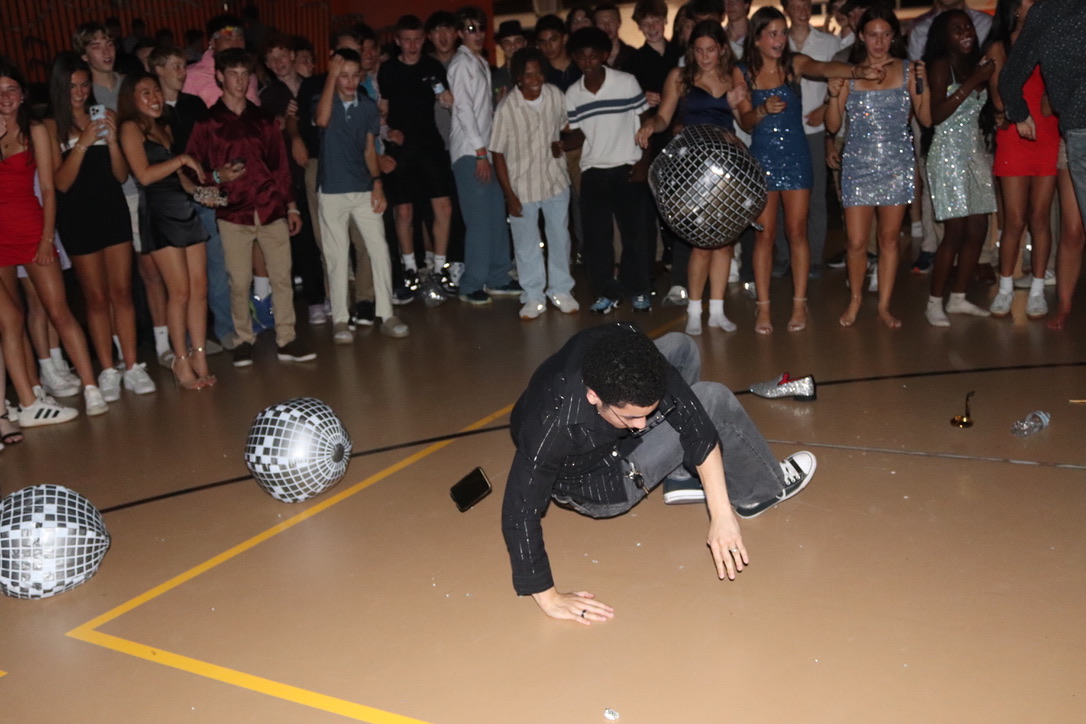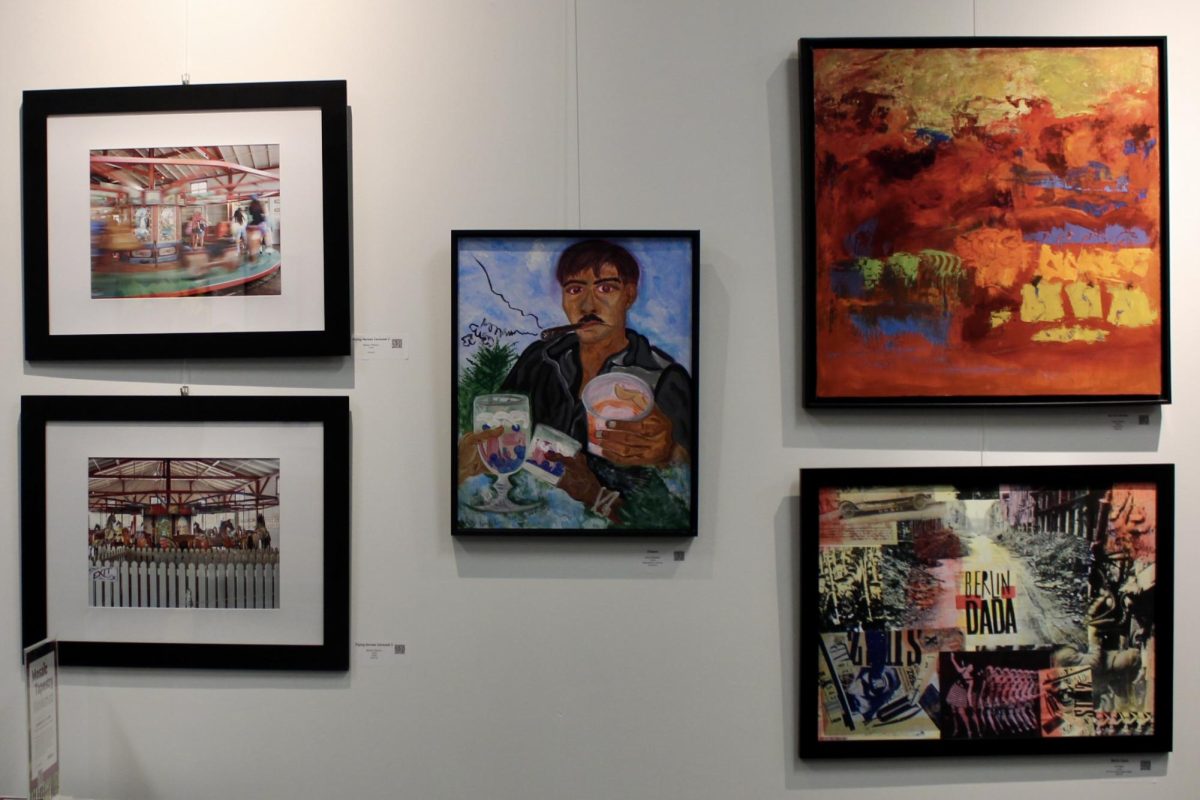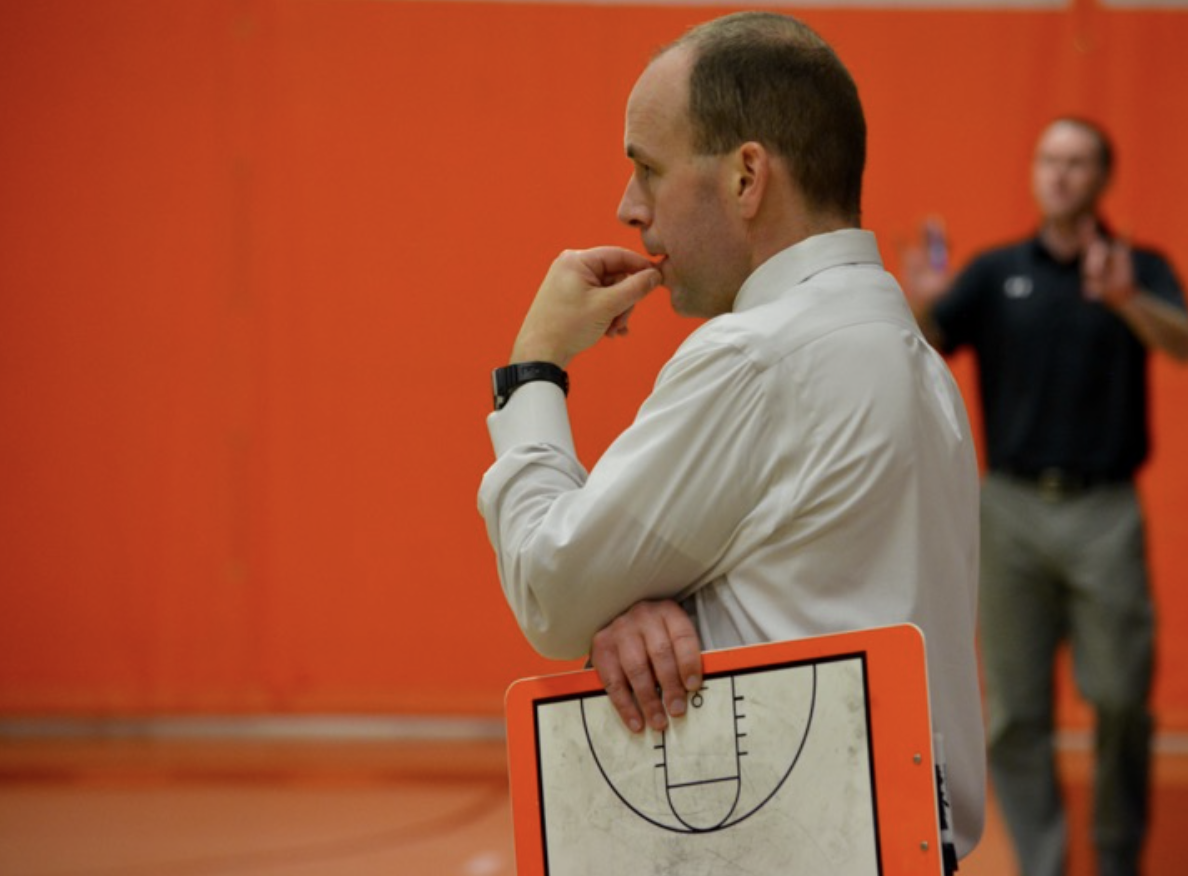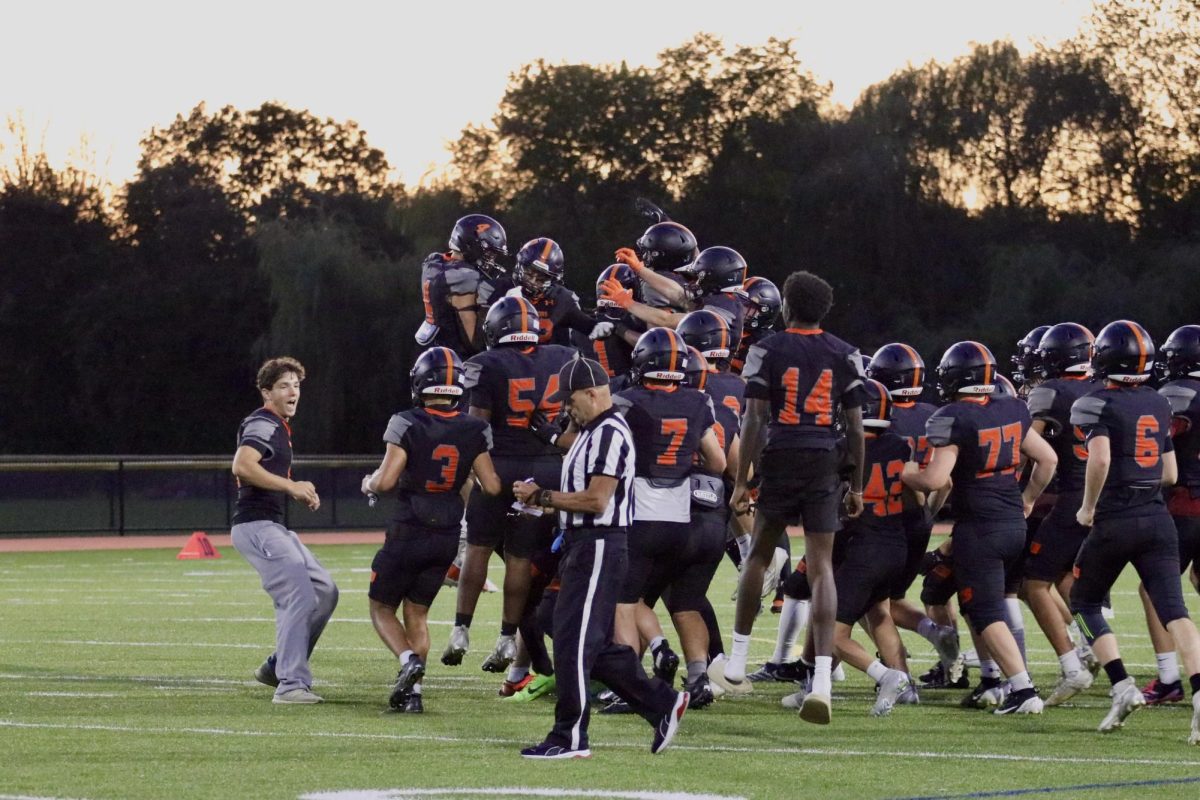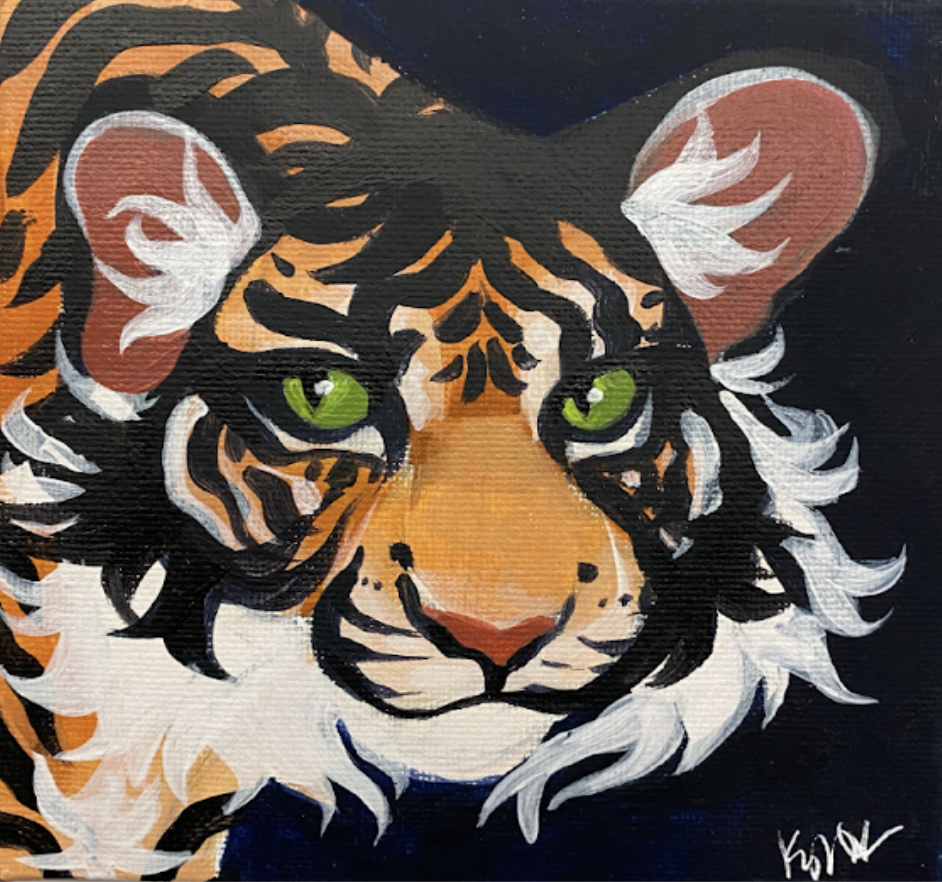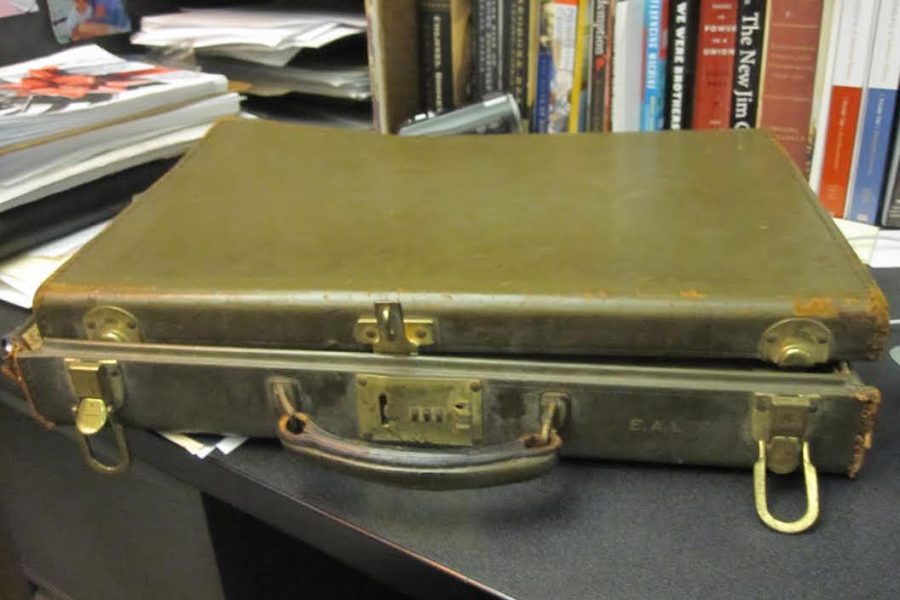Attic Archaeology class studies mystery briefcase
Credit: Kevin Delaney
Above is a briefcase containing artwork which Wellesley resident Deb Merkin found in the middle of a Wayland street. History teacher Kevin Delaney and his Attic Archaeology class have been researching the briefcase this winter. “It’s been great fun,” Delaney said.
A history teacher receives a mysterious briefcase, salvaged from the middle of a road by a passerby who happened to notice it from atop her bicycle. The briefcase is full of artwork, some of it signed and dated and some of it without so much as a scribble on the back for identification.
It sounds like the opening scene of a history-detective thriller, but WHS history teacher Kevin Delaney’s Attic Archaeology class has been studying just such a briefcase this winter.
“We’ve been documenting it extensively, every aspect of it,” Delaney said.
Between the briefcase’s story and its contents, there has been much to document.
Two years ago, Wellesley resident Deb Merkin found the briefcase at the intersection of Route 30 and Oak Street while riding her bicycle through Wayland. The case had fallen open, and the pieces of art inside were scattered across the road. Merkin told Delaney later that she rushed into oncoming traffic to collect the papers inside the briefcase.
Soon after finding the briefcase, Merkin brought it to the Wayland Police Department, hoping that police could find out who owned the case and return it to them. Two years later, no one had claimed the case, and the police offered to either give it to Merkin or throw it out. Merkin took the briefcase and contacted Delaney through a coworker who knew him. Delaney agreed to have his students research its history and find a way to return it to its owner.
In November, the Attic Archaeology class opened the box containing the briefcase for the first time, examining the case and the artwork inside while updating Merkin on their findings over the classroom phone.
“I didn’t even know there was a briefcase in it, honestly, because that part of the story I didn’t know until we opened it up together in class,” Delaney said. “We went through it piece by piece. Students were describing what they saw and she was saying one or two things about [each piece].”
The class split research on the 20 pieces of artwork among small teams. Each team focused on documenting the properties of the pieces themselves and figuring out their backgrounds.
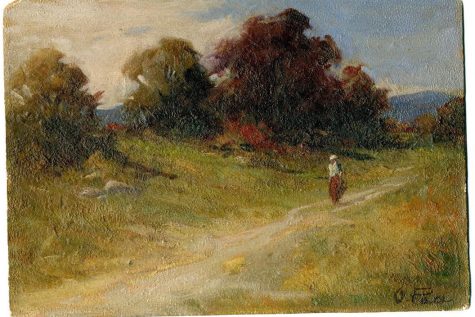
The pieces include pen and ink fashion illustrations that art appraiser Emily Weintraub, who helped students analyze the artwork, believes may have been created for a fashion magazine in the early 1900s. Many of these are dated and signed by various artists. There are also a number of etchings of landscapes and places, such as the Wayside Inn in Sudbury and French, English, and Canadian scenes.
In addition to these, the case contained three small oil paintings, one of a cow and two of landscapes. One oil painting bore the label “From the Providence, Rhode Island Art Club,” a club which still exists.
Finally, students also found an Indian gouache painting with writing at the top, which they first believed was Sanskrit but found was a dialect of Hindi.
Some students posted notices on social media about the briefcase, which caught Weintraub’s eye. Weintraub contacted Delaney and visited the class in December to examine the artwork.
“The students had done wonderful research and pretty in-depth research on the pieces,” Weintraub said. “It’s a pretty eclectic group of artwork.”
Weintraub said that it was difficult to form a solid theory about the artwork itself because of its hazy backstory.
“It’s such a mystery because the suitcase was found in the middle of an intersection,” Weintraub said. “I think that finding the owner of the suitcase will probably be pretty challenging unless someone comes forward, recognizes the contents, and is maybe a relative.”
One research team took on the briefcase itself. Senior Ellery Kiefer, who was part of the team, came upon some further clues to the identity of the owner.
The briefcase was of a brand popular in the 1940s and ‘50s and bore the initials E.A.L. Kiefer searched for Wayland census records on the online genealogical archive Ancestry.com and discovered in the 1940 census that there had been an Elias Anselm Landry living in Wayland at the time. He was around 30 years old, a plausible age for someone who carried a briefcase, and had emigrated from Canada to the United States.
“I was like, ‘Holy cow, I’m onto something,’” Kiefer said.
The census record stated that Landry was of French and English descent, which led Kiefer to another realization.
“A lot of the paintings and sketches and etchings in the briefcase are places in Britain and places in France,” Kiefer said. “I figured that it makes sense that it would be him.”
Each student in the Attic Archaeology class produces a 15-minute documentary on a local history topic of their choosing, and Kiefer decided to further investigate the briefcase for her own project. She has since made efforts to contact Landry’s surviving family members, although she is not completely certain that Landry owned the briefcase.
“It was a huge breakthrough finding the E.A.L., but I’m still not sure,” Kiefer said. “I can’t exactly say, ‘Yes, that was his.’”
Despite Kiefer’s work, most of the briefcase’s story remains a mystery. According to Delaney, the class’ current speculation is that the case was found when someone was cleaning an attic or a basement.
“Our current thinking is that it probably fell off the back of a junk truck, like 1-800-Got-Junk. Who wouldn’t want to find that?” Delaney said. “Maybe it fell off the truck when it was going around the corner to go to the dump.”
Delaney also said he enjoyed the research process and the mystery surrounding the briefcase.
“It’s been great fun,” Delaney said.
Kiefer’s documentary, which will include her research and the class’ theory on the briefcase’s tale, will be released on WayCam after mid-year exams. Kiefer can be contacted with leads on the briefcase or the artwork inside at [email protected].
Your donation will support the student journalists of Wayland High School. Your contribution will allow us to purchase equipment, cover our annual website hosting costs and sponsor admission and traveling costs for the annual JEA journalism convention.


